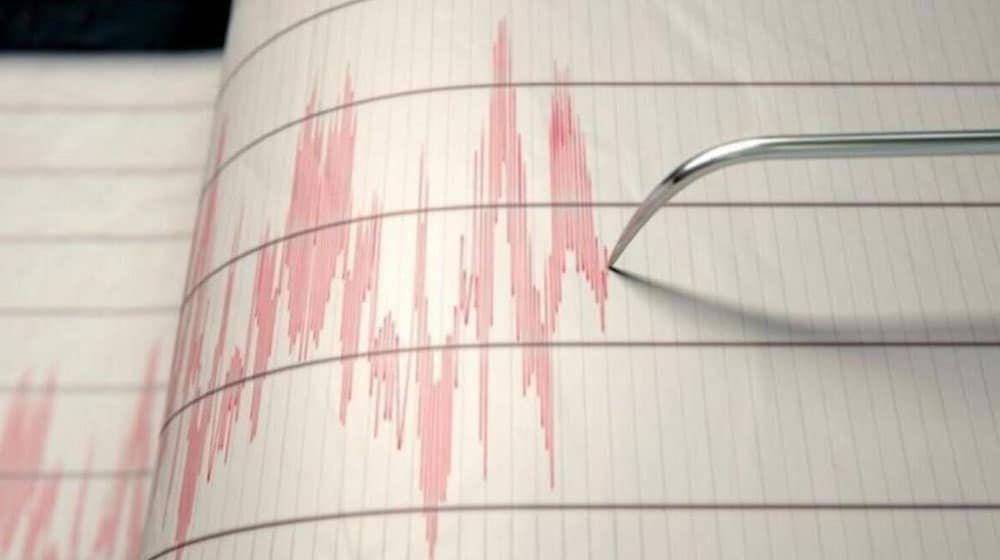Earthquake 5 Jolts in pakistan Islamabad, Lahore, Peshawar, Other Cities

earthquake 5 jolts in pakistan
In a startling development, a 5.0 magnitude earthquake struck various regions across Pakistan, causing widespread concern among the public. The tremors were felt in major cities including Islamabad, Rawalpindi, Peshawar, Lahore, and the region of Azad Jammu and Kashmir. Although no immediate reports of damage or casualties have surfaced, the incident has raised serious questions about earthquake preparedness in the country.1
Epicenter and Seismic Activity
According to initial seismic data, the earthquake registered a magnitude of 5.0 on the Richter scale. The epicenter is believed to be located in the northern belt of Pakistan, a region that is historically known for its vulnerability to tectonic movements due to its location on the active fault lines of the Eurasian and Indian tectonic plates.
The jolts were brief but powerful enough to be noticed across a vast area. People in various cities rushed out of their homes and workplaces in panic, reciting prayers and seeking safety in open spaces. These reactions reflect the trauma of past disasters, most notably the devastating 2005 earthquake that shook the region and claimed thousands of lives.
Cities Affected by the Earthquake
The earthquake was widely felt across Punjab and Khyber Pakhtunkhwa provinces, in addition to the region of Azad Jammu and Kashmir.
-
Islamabad: The federal capital experienced strong tremors for a few seconds. Residents in high-rise buildings and office towers evacuated buildings as a safety measure.
-
Rawalpindi: Neighboring the capital, Rawalpindi witnessed similar panic, especially in commercial areas and educational institutions.
-
Lahore: Tremors were also reported in Lahore, though they were relatively milder compared to the northern cities.
-
Peshawar: In this provincial capital of Khyber Pakhtunkhwa, people were seen leaving markets and residential areas to gather in open fields.
-
Azad Jammu and Kashmir: The region has a history of seismic activity and was not spared by the recent quake. Authorities were on high alert, but thankfully, no damage was reported.
Public Reaction and Emergency Services
The National Disaster Management Authority (NDMA) and the Pakistan Meteorological Department (PMD) quickly released alerts confirming the magnitude and safety status post-earthquake. Local authorities have advised residents to remain vigilant and report any aftershocks or structural damage in their areas.
Social media platforms were flooded with real-time updates, videos, and messages from concerned citizens. Hashtags like #EarthquakePakistan and #JoltsInPakistan quickly began trending on X (formerly Twitter).
Emergency services, including rescue units and medical teams, were put on standby as a precautionary measure. Hospitals were also directed to remain alert in case of emergency admissions, although none were reported as of the latest updates.
Earthquake Preparedness in Pakistan
Pakistan lies in one of the most seismically active zones in the world, particularly in the Himalayan region and along the western boundary with Iran and Afghanistan. This makes earthquake preparedness not just important, but essential.
Unfortunately, earthquake readiness in many Pakistani cities remains inadequate. Urban development, especially in older cities, often ignores modern building codes and seismic resistance designs. Despite repeated warnings from experts, little has been done to retrofit vulnerable structures or educate the public on how to respond during an earthquake.
Role of the Media and Government
Media outlets have played a crucial role in disseminating information and keeping the public informed. Continuous coverage helped calm public nerves while also providing safety tips and updates from authorities.
Government agencies like the NDMA and PDMA (Provincial Disaster Management Authorities) were quick to issue safety statements and monitor the situation. However, critics argue that these reactive measures must be replaced by proactive strategies focused on long-term safety and awareness.
What To Do During an Earthquake
For future safety, it is vital that the public knows how to respond when an earthquake strikes:
-
Drop, Cover, and Hold – If indoors, get under a sturdy piece of furniture and hold on.
-
Stay Away from Windows – Shattered glass can cause injuries.
-
Do Not Use Elevators – Always use stairs when evacuating a building.
-
Move to an Open Area – If outdoors, stay away from power lines, trees, and buildings.
Conclusion
While today’s earthquake did not result in any damage or loss of life, it serves as a stern reminder of the region’s seismic vulnerability. It is crucial for both authorities and citizens to prioritize earthquake readiness. Through better construction practices, awareness campaigns, and emergency training, future tragedies can be averted.
Pakistan must not wait for another disaster to act. The safety of millions depends on foresight, preparation, and collective responsibility.



